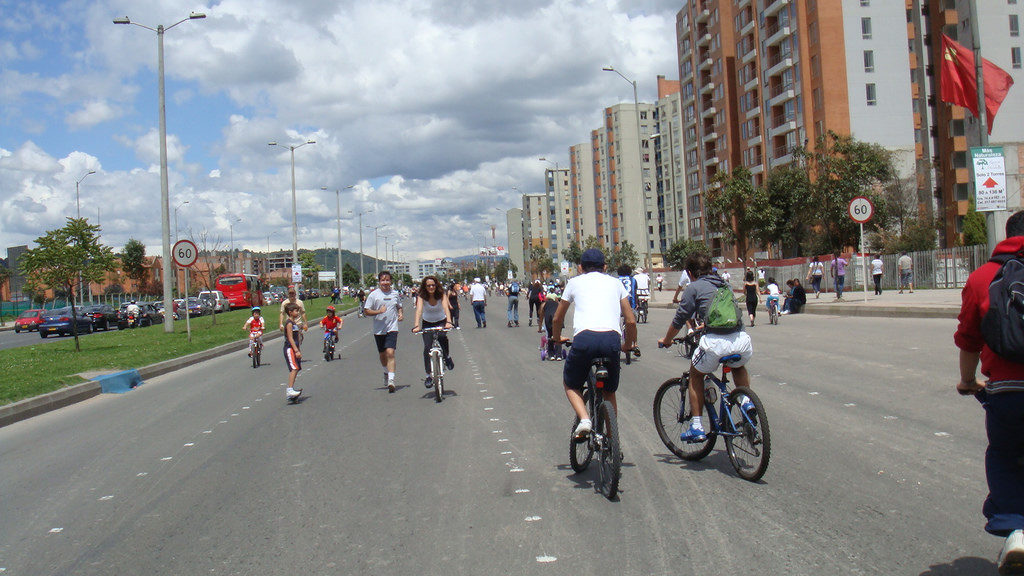The Beginning of Open Streets: Bogotá, Colombia Changes the Game

By Marynoel Strope
The story of open streets begins with Ciclovía
In 1974, Bogotá, Colombia began an experiment that would help shape a worldwide movement. That year, bicycling and recreation advocates piloted a program that closed city streets to cars to open them up for cycling and recreation.
“When I came back home to Bogotá, I was shocked to see that we Colombians were following the American path of urban development. Cars and more cars. One person, one car. It was obvious that this was not going to lead to a livable city, “ original Ciclovía organizer Jaime Ortiz Mariño told Bicycling Magazine.
In the 1990s and early 2000s, Mayor Enrique Peñalosa and his brother, parks commissioner Gil Peñalosa, increased the route to 70 miles, creating the expansive, nearly-citywide Ciclovía enjoys today. City parks are also opened up during the events so citizens can benefit from free exercise classes, and numerous studies have been conducted on the positive public health impacts. In economically stratified cities, open streets improve social connection too, providing a space all people can come together, regardless of wealth or status.
Nearly two million people turn out for Ciclovía, which takes place every Sunday and most holidays from 7 a.m. to 2 p.m. Though it has faced some challenges – including a congressman who tried to outlaw the program, saying it led to car traffic – the event has become an international touchstone and the inspiration for almost every open street program today, including Sunday Streets. The word, meaning “bike path” or “cycle way” has become synonymous with open streets.
As the fourth-largest city in Colombia, Bogotá is a sprawling industrial and economic center, with nearly 8 million inhabitants. It’s so crowded that car travel is restricted via license plate during peak hours, and heavy industry, vehicle traffic and a mountainous location lead to poor air quality.
But Bogotá is also a city shaped by Ciclovía and its champions, with over 200 miles of bike paths, and a city mandate that all new streets include bike lanes.
The transit and sustainability issues the city still faces point to the need for policy and legislation to work hand-in-hand with actionable interventions. But the success and permanency of a program many never imagined would succeed shows that a major metropolis can create mode shift, transforming car-dominated streets on a massive, nearly citywide scale weekly. As we envision a sustainable future, Ciclovía is a reminder that a city can thrive without cars on a scale few would have ever thought possible.
